#creative software market demand
Explore tagged Tumblr posts
Text
Kickstart Your Earnings with Content Writing: A Beginner’s Friendly Roadmap
If you’ve ever wondered how ordinary people turn their words into cash, content writing might be your sweet spot. You don’t need a fancy degree or decades of experience to get started. With some guidance, dedication, and a dash of creativity, you can start earning from content writing sooner than you think. This guide walks you through each step in a friendly, down‑to‑earth way so you’ll feel confident launching your freelance writing journey.

Why Content Writing Is a Great Starting Point Content writing covers everything from blog posts and web pages to social media captions and product descriptions. Businesses of all sizes need fresh, engaging words to connect with their audience, rank higher in search engines, and boost sales. As companies continue to invest in digital marketing, demand for quality content writers stays strong. Plus, you can work from anywhere, set your own hours, and choose projects that spark your interest.
Understanding the Basics of Earning from Content Writing At its core, earning from content writing means providing value through written words. Clients pay for:
Research that saves them time
SEO‑friendly copy that boosts visibility
Clear, engaging storytelling that connects with readers
Consistent output that maintains an active online presence
Your job is to become the go‑to person who delivers those benefits reliably.
Step 1: Identify Your Niche and Strengths While generalists can find work, specializing helps you stand out. Consider topics you enjoy or know well—travel, personal finance, health and wellness, tech, lifestyle, parenting, gaming, or education. Having a niche makes it easier to showcase your expertise and justify higher rates. If you’re a fitness buff who loves writing, focus on blogs and articles in that sphere. If you have a background in software, aim for tech how‑to guides.
Step 2: Build a Portfolio That Shows Your Skills Clients want proof you can write well. Even if you haven’t been paid yet, you can create sample pieces:
Start a personal blog or Medium page and publish 3 to 5 high‑quality articles in your niche.
Guest post on small blogs that accept submissions.
Rewrite or summarize existing news stories in your voice (clearly marked as samples).
Draft mock project pieces for imaginary clients—product descriptions, newsletters, or landing pages.
Organize these in a simple online portfolio. You can use free tools like Google Sites, Wix, or WordPress. Make sure each sample highlights your SEO skills by including relevant keywords naturally in titles and subheadings.
Step 3: Optimize Your Online Profiles for Visibility Next, set up profiles on freelance platforms and job boards. Popular destinations include Upwork, Fiverr, Freelancer, ProBlogger, Contena, and LinkedIn. When crafting your profile:
Write an engaging headline that includes “content writer” or “freelance writer.”
Summarize your background, niche focus, and any standout achievements.
List your portfolio samples or link directly to your site.
Add relevant skills: SEO, WordPress, SEMrush, Mailchimp, social media management, etc.
Request testimonials from friends or colleagues who can vouch for your work ethic or writing ability.
A well‑optimized profile boosts your chances of appearing in client searches and winning invitations.
Step 4: Find Your First Paid Gigs Landing that first paid project often takes persistence. Strategies that work:
Pitch directly to small businesses or local startups. Send personalized emails offering a free trial article or website audit.
Apply to relevant listings daily on freelance boards. Tailor each proposal to the client’s needs—mention specifics from their job post.
Explore niche‑specific boards like BloggingPro or JournalismJobs for targeted opportunities.
Network on LinkedIn by sharing helpful writing tips, engaging with posts in your niche, and connecting with marketing professionals.
Early on, you might accept lower‑priced gigs to build credibility, but avoid underpricing yourself. Aim for a rate you can increase once you’ve racked up 5 to 10 positive reviews.
Step 5: Master SEO and Content Strategy SEO savvy writers command better fees. Search Engine Optimization involves understanding how keywords, user intent, and readability affect rankings. To shine:
Use free keyword research tools like Google Keyword Planner or Ubersuggest to identify target phrases.
Incorporate primary keywords in titles, opening paragraphs, subheadings, and naturally throughout the text.
Keep sentences concise, break up text with subheadings, and add bullet lists or numbered steps for scannability.
Learn basic on‑page SEO: meta descriptions, internal linking, image alt text, and proper URL structure.
Businesses pay for measurable results. If your copy ranks higher and drives traffic, you become more valuable.
Step 6: Set Competitive Rates and Payment Terms Knowing how much to charge can feel tricky. Common approaches include:
Per‑word rate: New freelance writers often start at five to ten cents per word, moving up to twenty cents or more with experience.
Per‑hour rate: Beginners might charge twenty to thirty dollars per hour, progressing to fifty and beyond as skills sharpen.
Per‑project fee: Flat rates for complete blog posts or web pages, factoring in research, revisions, and strategy.
Always agree on payment milestones. A 50/50 split works—half up front, half on completion. Use contracts to outline deliverables, deadlines, and revision policies. This keeps both sides on the same page.
Step 7: Deliver Quality and Build Long‑Term Relationships Repeat clients are freelancing gold. To keep clients coming back:
Meet deadlines without reminders.
Communicate clearly—let them know if you hit a roadblock and propose solutions.
Offer a revision round to refine the piece to their liking.
Suggest topic ideas for future posts based on emerging trends in their industry.
When clients see you consistently add value, they’ll hire you again and refer you to others.
Step 8: Leverage Tools and Continuous Learning Stay competitive by embracing helpful platforms:
Grammarly or ProWritingAid to polish grammar and tone.
Yoast or Rank Math (for WordPress) to fine‑tune on‑page SEO.
Trello or Asana for managing multiple projects smoothly.
Google Analytics basics to understand content performance.
Invest time in online courses or webinars on SEO, storytelling, and copywriting. The more you learn, the more you can charge.
Step 9: Scale Your Earnings Over Time Once you’ve established a steady stream of projects, scaling becomes the name of the game. Options include:
Raising your rates for new clients while maintaining current engagements.
Packaging content services—offer blog writing plus email newsletters or social media management as a bundle.
Outsourcing parts of the work, like research or editing, to junior writers, allowing you to focus on strategy and client relations.
Creating digital products, such as eBooks or courses on content writing, to earn passive income.
Diversifying revenue streams helps insulate your income from slow periods.
Putting It All Together Earning from content writing is an achievable goal, even if you’re starting from scratch. By identifying your niche, building an impressive portfolio, mastering SEO, and delivering top‑notch work, you’ll attract clients eager to pay for your expertise. Remember that patience and persistence pay off. Treat every project as a chance to improve your craft and delight a client. Before you know it, you’ll have a thriving freelance writing business that fits your lifestyle and fuels your creative passions.
5 notes
·
View notes
Text
Tired Webcomic Creator Noises
Gags … ah yes lets make art into mindless content spat out by Ai cos we've been literally killing creators with inhumane workloads to spit out as many episodes as possible for mindless consumption.
I make my comics with passion and love of the craft! I have a degree in Comics, I spent years...years learning, practising, experimenting, adapting. I recall the days where you may get a page a week, or a few at the start of the month back in the 2000s era of self hosted webcomics and smackjeeves. (Rant below)
I've had to learn how the whole scrolling format worked to adapt to where all the readers had gone to, having been taught the traditional print page formats. And now cos its suddenly a massive money maker for these few hosts and they've pushed creators to the brink with the sheer volume they want pumped out that of course they want to use AI.

But it will speed up colouring! I have multiple tools available by the software I use and made by the wonderful people who love creating that colouring isn't that much of a chore, Its my fav part honestly. And its also a job sector within comics, colourists are skilled artists and this is another way to trim the fat, to pocket more money and keep churning out the 5th millionth villainess story.
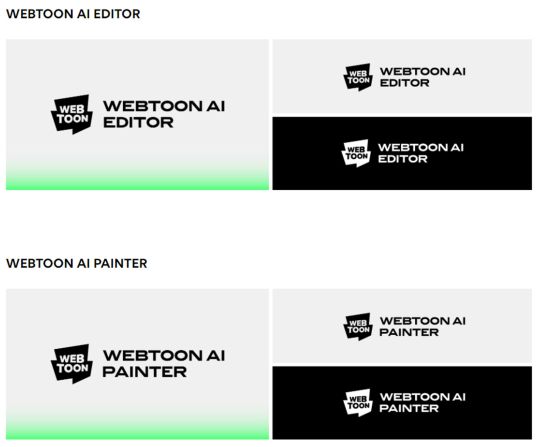
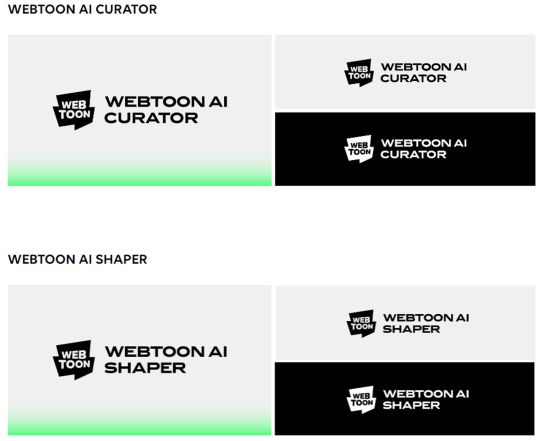
Yes I am in most views a tiny creator, I haven't even broken their 1000 sub goal to even try applying for ad rev in the near 5 ish years on webtoon. But what I make I love, I spend hours researching folklore, scripting, drafting the whole kabudle like many other creators. And other than the kind supporters on my Patreon and Ko-fi I don't make much from the hours, days, weeks I pour into what I make. But at least I know its made with my own hands. That its made with love as corny as that sounds.
Ai is creeping its tentacles into everything, now ethically trained ai tools to help smaller creators would be fine. Most creators already rely on 3d tools to speed up things like backgrounds for webcomics. But when we don't know what its trained on, and is marketed wholesale as something anyone can use to make "content" is where it gets insidious. I am all for anyone with the desire to create and tell a story to go out there and do so, whether a beginner or a master. Part of the joy of a long running webcomic is seeing the artist grow both artistically and literary. But with ai it will be all one homogenous style, a copy of what ever is the hot thing. We already have amazon stuffed to the teeth with ai generated books, videos, merch and more all to be sold in some get rich quick manner. (need I point at the Willy's Wonderland incident). Youtube videos being spat out by faceless accounts stealing and regurgitating content at the speed no human video making team can easily match without cutting out quality or fact checking.
It is tiring. Creatives as a whole are treated poorly for decades, and now with the rapid late stage capitalism, website /social media enshitification and the blind headlong rush into the next big money making thing (watches the nft crash). I can't deny Covid sped this up, as everyone was locked inside and turned to what we creators made for comfort. But that content eating boom, lead to more demand, faster output and tighter budgets. We are seeing journalists being cut, game designers in their thousands and recently Dreamworks cutting a bunch and pushing to make their Robot film come out sooner due to public demands.

Skilled creatives are being treated like disposable fast food restaurant employees. Used til they burn out, get injured and even die! And then are simply replaced.
I've never been a creator with huge ambitions to work at places like DC, Marvel or Top Cow. I simply wished to create and share stories with the world, to bring smiles, to create art that evokes emotions, inspires others to look around themselves and create too.
Art is for everyone. You just need to take that scary jump, there is a whole array of welcoming communities willing to teach and share. I wouldn't have improved so much without the kindness of the webcomic groups I've discovered and learnt from. Everyone is always learning, and there no shame in not knowing how to do a thing. Even I started with the cheesy how to draw books as a kid and made my own pokemon and digimon.
Don't let the world treat your art as content. It is "ART" as much as what's kept in the louvre is seen as art, so is that little stick man doodle on a postit.
So Try something new, try a new material, a new style.
And support the artists you enjoy, tip their Ko-Fi, pledge to their Patreon, buy a sticker or print. Share their posts and tell them what you love about what they make.
Don't let machines steal away the art in HEART.
25 notes
·
View notes
Text
🛑 Subscription Fatigue: You Don’t Own Sh-t Anymore

The Great Ownership Heist—And You Paid for It
Once upon a time, when you bought something, it was yours. Forever. No extra fees. No fine print. Just a simple transaction: money exchanged for permanent ownership.
Now? Welcome to Subscription Hell—where you don’t own sh-t anymore, but you sure as hell keep paying for it.
In the last 15 years, corporations have collectively f-cked us over by shifting from selling products to selling access. The goal? Make sure you never actually own anything again.
And somehow, we just let it happen.
📉 The Subscription Takeover: How You Got Trapped
Remember when you bought CDs and they were yours forever? When you bought a game and played it whenever you wanted, without an online connection or a monthly charge? When software didn’t demand a recurring payment just so you could type a damn document?
Those days are dead.
Instead of a one-time purchase, everything is now a rental. ✅ Music? Spotify. Apple Music. Tidal. ✅ Movies? Netflix. Disney+. HBO Max. (Oh wait—it’s just “Max” now because marketing execs are idiots.) ✅ Video Games? Xbox Game Pass. PlayStation Plus. Nintendo Switch Online. ✅ Software? Adobe Creative Cloud. Microsoft 365. Even f-cking calculator apps now have subscriptions.
Everything is locked behind a paywall. And the best part? You never actually own any of it.
💸 You Will Own Nothing—And Pay Monthly for It
We used to buy things. Now we “subscribe.” And this shift wasn’t an accident. It was a slow, calculated effort to make you permanently dependent on corporations.
Think about it:
A one-time purchase = company makes money once.
A subscription model = company makes money forever.
It’s not just greed—it’s financial entrapment.
📌 Want to listen to your favorite music? Too bad—Spotify just removed your favorite album. Pay up or be at the mercy of whatever they decide to keep. 📌 Want to keep using Photoshop? Adobe wants $20 a month for eternity. Cancel? Poof—no access. 📌 Bought a car? Congratulations! Your heated seats now require a f-cking subscription.
Wait. Cars?! Yes.
🚗 BMW’s $18-a-Month Heated Seat Scam: The Final Boss of Greed
If you want a perfect example of how far this bullsh-t has gone, look no further than BMW.
BMW now charges a subscription for heated seats in some of their cars. Yes, you read that right.
The seats are already installed. The heating element is physically there in the car you bought. But unless you pay BMW $18 a month, they won’t let you use it.
Let that sink in.
You own the car. You own the seats. But the company still controls what you can access.
It’s like buying a house and being told you have to pay a subscription to use your own kitchen.
This is the future.

🎮 Gaming: Where You Pay to Rent the Past
Gaming used to be simple. You bought a game. You played it. It was yours. Now? Everything is a f-cking subscription.
🎮 Xbox Game Pass – Pay monthly or lose access. 🎮 PlayStation Plus – Rent your library or watch it vanish. 🎮 Nintendo Switch Online – Oh, you thought you could play old NES games? Pay up.
And it gets worse.
Now, developers release unfinished games and patch them later. Want a full experience? Buy the DLC. Oh, you wanted to actually own the game? Too bad, it’s “live service” now.
In 2004, you could walk into a store and buy Halo 2, a complete game, for $50. In 2024, you spend $70 on a game that isn’t even finished and still get hit with battle passes, microtransactions, and pay-to-win mechanics.
And yet—we just accept it.
📚 Digital Books: You Don’t Even Own the Words Anymore
🚨 Amazon can delete books from your Kindle remotely. This isn’t a conspiracy—it already happened.
In 2009, Amazon literally deleted George Orwell’s 1984 and Animal Farm from people’s Kindles without warning. The irony? A dystopian book about government control vanished from devices overnight.
If you “buy” a Kindle book, you’re not actually buying it. You’re purchasing a license to read it.
This means:
If Amazon wants to remove it, they can.
If your account is banned, you lose everything.
If they change the Terms of Service, tough luck.
You don’t own sh-t. You’re just renting access to words on a screen.
💀 Welcome to the Paywall Apocalypse
Subscription fatigue isn’t just annoying. It’s economic warfare.
Everything is now a pay-per-month nightmare, and the endgame is control.
🔴 Digital art? Subscriptions. 🔴 Smart homes? Subscriptions. 🔴 Car features? Subscriptions. 🔴 F-cking TOOTHBRUSHES?! Yes, there’s now a subscription service for toothbrush heads.
The goal is simple: Make sure you never fully own anything again.
🛠️ Can We Fight Back?
Honestly? It’s hard. These companies engineered dependence so well that it’s nearly impossible to escape. But here’s what you can do:
✅ BUY physical media. DVDs, CDs, game cartridges—real sh-t that can’t be deleted remotely. ✅ AVOID auto-renewing subscriptions. Make them work for your money. ✅ Look for one-time purchase alternatives. Stop paying Adobe $600 a year for Photoshop when one-time payment alternatives exist. ✅ Support anti-DRM (Digital Rights Management) products. If a company lets you actually own what you buy, reward them.
We probably can’t stop the subscription model entirely, but we can slow it down by refusing to throw money at companies who abuse it.
🚨 FINAL THOUGHT: THEY DON’T WANT YOU TO OWN ANYTHING—BECAUSE OWNERSHIP IS POWER
Owning something means independence. Owning something means they can’t take it away. Owning something means freedom.
That’s why corporations are systematically stripping away ownership in favor of perpetual payments. They don’t want you to have assets—they want you to have bills.
Welcome to the new world order: 💰 Own nothing. Pay forever.
And the worst part?
We let them do it.
💀 REBLOG if you’re tired of paying for sh-t you should already own. 💬 COMMENT the worst subscription scam you’ve seen. 🥩 LIKE if you miss the days of actually owning things. 🚀 FOLLOW for more savage takes, economic red pills, and the dark truth about the world.
#SubscriptionFatigue#YouDontOwnShit#CorporationsAreEvil#DigitalScam#CapitalismAtItsWorst#GreedOverload#EconomicSlavery#PayForever#BrokenSystems#WTFCapitalism#HardPillsToSwallow#FactsOverFeelings#BigTechBullshit#BrutalHonesty#CulturalCritique#DarkAcademia#SavageCommentary
2 notes
·
View notes
Text
How Artificial Intelligence is Transforming the Printing Industry
The printing industry is undergoing a significant transformation, thanks to the integration of artificial intelligence (AI). From automating production workflows to enhancing customer experiences, AI is helping businesses streamline operations, reduce costs, and improve efficiency. By leveraging print management software and online product designer tools, print businesses can now offer faster, more precise, and highly customized solutions.
1. AI-Driven Automation in Print Production
AI is revolutionizing the way printing businesses manage their workflows. With print management software, AI can analyze order patterns, optimize print scheduling, and reduce waste, making production processes more efficient. Automated quality control systems powered by AI can also detect errors in print files before production, ensuring high-quality output with minimal human intervention.
2. Enhancing Customer Experience with AI
Customers today expect fast, seamless, and personalized services. AI-powered chatbots and virtual assistants help printing businesses provide instant support, answering customer queries and guiding them through the ordering process. Additionally, AI-driven recommendation systems suggest the best print options based on customer preferences, improving user engagement and satisfaction.
3. Smarter Design Capabilities with AI
The integration of AI with an online product designer enables users to create stunning, print-ready designs with ease. AI can assist in:
Auto-generating design templates based on user input.
Providing real-time design feedback and error detection.
Offering intelligent color-matching and font-pairing suggestions. This ensures that even users with minimal design experience can create professional-quality prints effortlessly.
4. AI-Powered Print Marketing and Personalization
AI is enhancing print marketing by enabling hyper-personalization. Businesses can use AI to analyze customer behavior and create targeted print materials, such as direct mail campaigns customized to individual preferences. Variable data printing (VDP), combined with AI, allows businesses to produce personalized brochures, flyers, and packaging that appeal to specific audiences.
5. Predictive Maintenance for Printing Equipment
One of the biggest challenges in the printing industry is machine downtime. AI-powered predictive maintenance in print management software helps monitor the health of printing equipment, identifying potential failures before they occur. This reduces unexpected breakdowns, increases machine lifespan, and improves overall efficiency.
6. AI in Supply Chain and Inventory Management
AI-driven analytics help printing businesses optimize their supply chain by forecasting demand, tracking inventory levels, and preventing stock shortages or overproduction. This level of automation ensures smooth order fulfillment and cost savings in material procurement.
7. The Future of AI in Printing
As AI technology continues to advance, its impact on the printing industry will only grow. From real-time production monitoring to AI-powered creative tools, the future of printing will be faster, smarter, and more customer-centric. Businesses that embrace AI-driven print management software and online product designer solutions will have a competitive edge in delivering high-quality, customized printing services.
Conclusion
The integration of artificial intelligence in the printing industry is not just a trend but a game-changer. By incorporating AI-powered print management software and intuitive online product designer tools, businesses can achieve higher efficiency, reduce costs, and enhance customer satisfaction. The future of printing is smart, and AI is leading the way toward a more innovative and automated industry.
2 notes
·
View notes
Text
Everything You Need to Know About Stickers

Stickers have become a staple in both personal and professional spaces, offering a versatile and creative way to express ideas, promote businesses, and enhance products. They come in a variety of shapes, sizes, and materials, making them suitable for different applications. In this informative guide, we will explore everything you need to know about stickers, including their types, manufacturing processes, and practical uses.
What Are Stickers?
A sticker is an adhesive label with a design or text on one side and a sticky backing on the other. Stickers can be made from different materials such as vinyl, paper, or polyester and can have finishes like glossy, matte, or transparent. Some stickers are designed for permanent applications, while others are removable or reusable.
Types of Stickers
Vinyl Stickers – Known for their durability, vinyl stickers are weatherproof and resistant to water and sunlight. They are ideal for outdoor use, such as car decals and bumper stickers.
Paper Stickers – These are cost-effective and best suited for indoor applications such as packaging, scrapbooking, or labeling.
Die-Cut Stickers – These stickers are precisely cut to the shape of the design, offering a high-end look. Die-cut vinyl stickers are especially popular in branding.
Holographic Stickers – With a reflective, multi-color finish, holographic stickers stand out and are often used for decorative purposes.
Clear Stickers – Transparent stickers give a seamless look when applied to surfaces like glass, plastic, or packaging.
Static Cling Stickers – These are non-adhesive stickers that cling to smooth surfaces using static electricity, making them reusable.
Eco-Friendly Stickers – Made from sustainable materials, these stickers are biodegradable and are a great choice for environmentally conscious brands.
Sticker Manufacturing Process
The process of making stickers involves several steps, from design to final production:
Designing – The artwork is created using digital design software.
Printing – The design is printed on sheets or rolls using inkjet, laser, or UV printing techniques.
Cutting – Stickers can be kiss-cut (leaving the backing intact) or die-cut to follow the shape of the design.
Lamination – A protective layer may be added to improve durability and prevent fading.
Packaging – Stickers are then cut into individual pieces or prepared as sticker sheets for distribution.
Common Uses of Stickers
Branding & Marketing – Businesses use custom stickers for logos, promotions, and packaging.
Personal Expression – People decorate laptops, water bottles, and phone cases with stickers to showcase their personality.
Educational & Informational – Schools and organizations use stickers for labeling, instruction, and awareness campaigns.
Event & Political Campaigns – Stickers serve as cost-effective promotional tools for political candidates, advocacy groups, and fundraisers.
Decor & Art – From wall decals to scrapbooking stickers, they add aesthetic appeal to various surfaces.
With the ever-growing demand for personalized and high-quality stickers, the industry continues to innovate with new materials and printing techniques. Whether for business or personal use, stickers remain an affordable and effective medium for creative expression and communication.
2 notes
·
View notes
Text
Why Teaching Kids Programming is Essential for Their Future
In today’s rapidly advancing digital world, programming has become an essential skill, much like reading and writing. As technology continues to shape our lives, the ability to code is no longer limited to computer scientists and software engineers—it has become a fundamental skill for everyone. Teaching children programming at an early age not only prepares them for future careers but also nurtures essential cognitive and social skills.With the rise of educational platforms like id.alg.academy, learning to code has never been more accessible. This innovative platform empowers children with the knowledge and tools to explore coding engagingly and interactively, laying the foundation for a future filled with limitless opportunities.The Main Benefits of Teaching Children Programming1. Critical Thinking and Problem-SolvingOne of the most significant advantages of learning to code is the development of critical thinking and problem-solving skills. Programming challenges children to break down complex problems into smaller, manageable steps—a process known as decomposition. By writing code, debugging errors, and refining solutions, kids learn how to think logically and develop solutions methodically.For example, coding a simple game requires structuring commands in a logical sequence. If an error occurs, children must analyze what went wrong and troubleshoot the problem, sharpening their analytical thinking abilities. This logical approach extends beyond programming and applies to various real-life situations, from mathematics to decision-making skills.2. Creativity and InnovationCoding is not just about logic and algorithms—it is also an incredible tool for fostering creativity and innovation. When children learn to program, they gain the power to create their own games, animations, and interactive stories. This encourages them to think outside the box and develop unique solutions to challenges.Platforms like id.alg.academy provide a structured yet open-ended learning environment, allowing kids to experiment with different ideas and bring their imaginations to life. Whether designing an app, developing a robot, or creating a digital artwork, coding enables children to become creators rather than passive consumers of technology.3. Career Opportunities in Technology and BeyondThe demand for skilled programmers is growing at an exponential rate. From artificial intelligence and cybersecurity to web development and data science, programming skills are a gateway to numerous career paths. However, even outside the tech industry, coding knowledge is becoming a valuable asset in fields like finance, healthcare, and engineering.By introducing children to programming early, parents and educators give them a competitive edge in the job market. Learning platforms such as id.alg.academy make coding approachable, ensuring that children develop a solid foundation that can evolve into professional expertise in the future.
2 notes
·
View notes
Text
Finding Your Perfect Fit: Tips for Choosing the Right Coworking Space in Pune
In today’s fast-paced business landscape, the choice of workspace plays a pivotal role in the success of entrepreneurs, freelancers, and startups alike. For professionals in the tech industry, where flexibility, collaboration, and innovation are paramount, selecting the right coworking space in Pune can make all the difference.
Tech workers frequently encounter particular difficulties at work, such as the requirement for specialist tools or the desire for an exciting and innovative environment. Thankfully, Pune’s coworking spaces meet these demands by providing a variety of facilities, services, and tech-specific networking opportunities.
Tech professionals frequently lament the lack of access to state-of-the-art infrastructure and equipment. A lot of new businesses and independent contractors find it difficult to pay the hefty overhead of opening an office. At a fraction of the price, coworking spaces in Pune provide cutting-edge amenities like ergonomic workstations, conference rooms, and high-speed internet. For instance, Spaces Coworking in Pune provides a specialized tech hub with the newest hardware and software, allowing tech workers to interact and work effectively.
Another challenge faced by tech professionals is the need for a collaborative environment conducive to innovation and creativity. Traditional office settings often lack the energy and dynamism required to foster brainstorming sessions and idea generation. Co Working spaces in Pune address this pain point by curating vibrant communities of like-minded individuals from diverse backgrounds. By working alongside fellow tech enthusiasts, professionals can exchange ideas, share insights, and form valuable partnerships. Testimonials from members of The Mesh Cowork in Pune attest to the supportive and collaborative atmosphere that has helped them overcome creative blocks and achieve their goals.
Additionally, tech workers frequently look for chances to advance their careers and increase their skill sets. Coworking spaces in Pune organize a range of professional development workshops, seminars, and networking events for individuals working in the tech sector. For example, The Daftar Coworking Space in Pune frequently arranges hackathons and coding bootcamps, giving tech workers access to the newest trends and technology and invaluable learning opportunities.
In conclusion, choosing the right coworking space in Pune is essential for tech professionals looking to thrive in today’s competitive market. By considering factors such as infrastructure, community, and opportunities for growth, professionals can find their perfect fit and unlock their full potential in the dynamic and innovative ecosystem of coworking spaces in Pune.
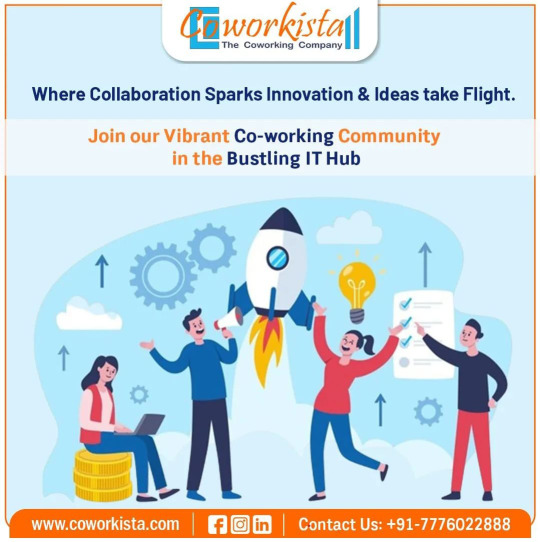
7 notes
·
View notes
Text
25 Passive Income Ideas to Build Wealth in 2025
Passive income is a game-changer for anyone looking to build wealth while freeing up their time. In 2025, technology and evolving market trends have opened up exciting opportunities to earn money with minimal ongoing effort. Here are 25 passive income ideas to help you grow your wealth:
1. Dividend Stocks
Invest in reliable dividend-paying companies to earn consistent income. Reinvest dividends to compound your returns over time.
2. Real Estate Crowdfunding
Join platforms like Fundrise or CrowdStreet to invest in real estate projects without the hassle of property management.
3. High-Yield Savings Accounts
Park your money in high-yield savings accounts or certificates of deposit (CDs) to earn guaranteed interest.
4. Rental Properties
Purchase rental properties and outsource property management to enjoy a steady cash flow.
5. Short-Term Rentals
Leverage platforms like Airbnb or Vrbo to rent out spare rooms or properties for extra income.
6. Peer-to-Peer Lending
Lend money through platforms like LendingClub and Prosper to earn interest on your investment.
7. Create an Online Course
Turn your expertise into an online course and sell it on platforms like Udemy or Teachable for recurring revenue.
8. Write an eBook
Publish an eBook on Amazon Kindle or similar platforms to earn royalties.
9. Affiliate Marketing
Promote products or services through a blog, YouTube channel, or social media and earn commissions for every sale.
10. Digital Products
Design and sell digital products such as templates, printables, or stock photos on Etsy or your website.
11. Print-on-Demand
Use platforms like Redbubble or Printful to sell custom-designed merchandise without inventory.
12. Mobile App Development
Create a useful app and monetize it through ads or subscription models.
13. Royalties from Creative Work
Earn royalties from music, photography, or artwork licensed for commercial use.
14. Dropshipping
Set up an eCommerce store and partner with suppliers to fulfill orders directly to customers.
15. Blogging
Start a niche blog, grow your audience, and monetize through ads, sponsorships, or affiliate links.
16. YouTube Channel
Create a YouTube channel around a specific niche and earn through ads, sponsorships, and memberships.
17. Automated Businesses
Use tools to automate online businesses, such as email marketing or subscription box services.
18. REITs (Real Estate Investment Trusts)
Invest in REITs to earn dividends from real estate holdings without owning property.
19. Invest in Index Funds
Index funds provide a simple way to earn passive income by mirroring the performance of stock market indexes.
20. License Software
Develop and license software or plugins that businesses and individuals can use.
21. Crypto Staking
Participate in crypto staking to earn rewards for holding and validating transactions on a blockchain network.
22. Automated Stock Trading
Leverage robo-advisors or algorithmic trading platforms to generate passive income from the stock market.
23. Create a Membership Site
Offer exclusive content or resources on a membership site for a recurring subscription fee.
24. Domain Flipping
Buy and sell domain names for a profit by identifying valuable online real estate.
25. Invest in AI Tools
Invest in AI-driven platforms or create AI-based products that solve real-world problems.
Getting Started
The key to success with passive income is to start with one or two ideas that align with your skills, interests, and resources. With dedication and consistency, you can build a diversified portfolio of passive income streams to secure your financial future.
2 notes
·
View notes
Text
New Policies of Rajasthan Government Unveiled: Col Rajyavardhan Rathore
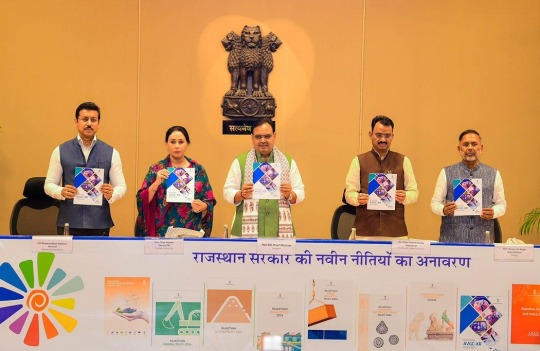
Rajasthan, known for its cultural heritage and historic prominence, is making waves with forward-thinking policies designed to usher in a new era of growth and development. Col Rajyavardhan Rathore, a dynamic leader and advocate of progress, has been instrumental in shaping and supporting these initiatives. These policies aim to address critical areas such as economic development, environmental sustainability, social equity, and digital transformation, marking a significant step forward for the state.
A Vision for Progress
The new policies reflect the Rajasthan government’s commitment to fostering innovation, inclusivity, and sustainability. By targeting various sectors, from education and infrastructure to technology and rural development, these initiatives promise a brighter and more prosperous future for all.

Key Policies Unveiled
1. Rajasthan MSME Policy 2024
Micro, Small, and Medium Enterprises (MSMEs) form the backbone of Rajasthan’s economy. This policy aims to:
Provide financial assistance and subsidies to MSMEs.
Simplify regulatory processes to encourage entrepreneurship.
Create employment opportunities, especially in rural areas.

2. One District, One Product (ODOP) Scheme
To boost local businesses and crafts, the ODOP scheme promotes:
Identifying unique products in each district for focused development.
Establishing market linkages and export support.
Providing branding and marketing assistance to artisans and producers.
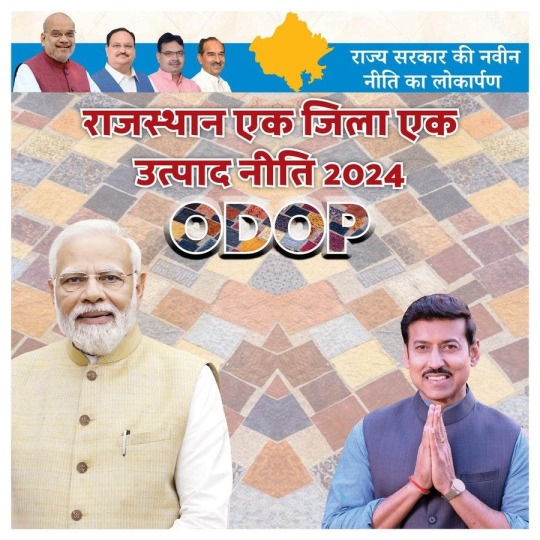
3. Rajasthan Startup Policy 2024
The state’s focus on fostering innovation is evident through its startup-friendly policies, which include:
Seed funding and incubation support for startups.
Incentives for women-led and rural-based startups.
Establishing innovation hubs across districts.
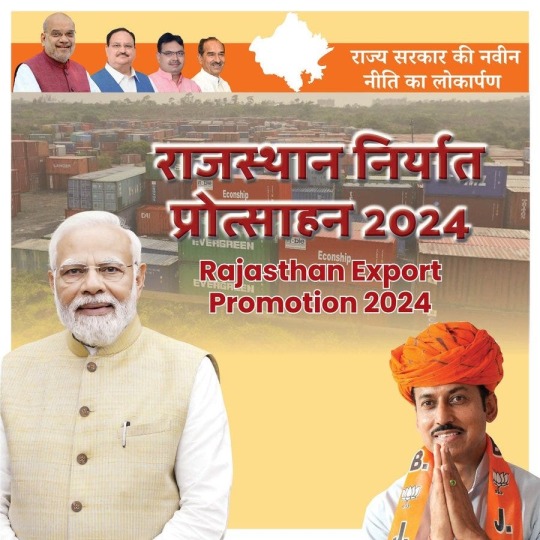
4. Integrated Cluster Development Scheme
This policy aims to modernize and empower traditional industries by:
Developing common facilities for industrial clusters.
Providing training programs for workers in emerging technologies.
Enhancing infrastructure to attract investments.
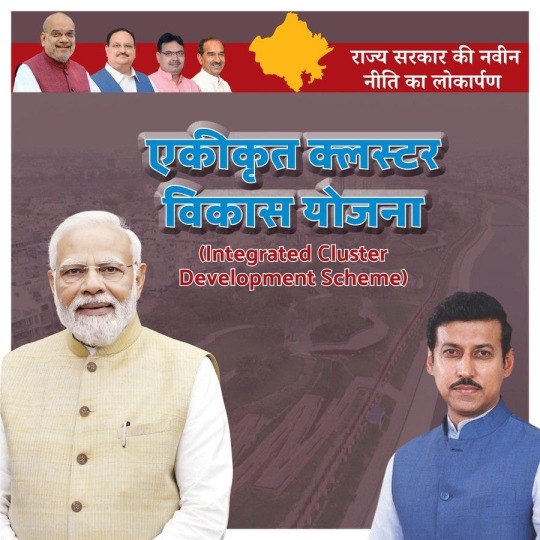
5. Rajasthan AVGC-XR Policy 2024
Focusing on the Animation, Visual Effects, Gaming, and Extended Reality (AVGC-XR) sectors, this policy includes:
Setting up AVGC-XR training institutes.
Providing subsidies for software and hardware procurement.
Promoting Rajasthan as a hub for creative industries.

Environmental Sustainability Policies
6. Rajasthan Green Energy Initiative
To combat climate change and boost renewable energy production, the policy emphasizes:
Developing large-scale solar and wind energy projects.
Offering incentives for businesses to adopt green energy solutions.
Encouraging electric vehicle adoption through subsidies.
7. Water Conservation Policy
Addressing water scarcity in Rajasthan, this policy includes:
Promoting rainwater harvesting and groundwater recharge.
Modernizing irrigation systems to improve efficiency.
Encouraging community-driven water conservation efforts.
Social Development Policies
8. Rajasthan Women Empowerment Scheme
Aimed at promoting gender equality, this policy focuses on:
Providing skill training and entrepreneurship opportunities for women.
Ensuring safety and security through improved law enforcement.
Offering financial incentives for girls’ education.
9. Antyodaya Seva Camp Initiative
Launched to mark the successful completion of the BJP government’s first year, this program:
Provides direct access to government schemes and services.
Ensures welfare benefits reach the most marginalized communities.
Organizes awareness drives about social and economic rights.
Education and Digital Transformation
10. Rajasthan DigiSkill Program
To prepare the workforce for a digital future, this program includes:
Training in digital tools, AI, and coding for youth.
Setting up digital labs in schools and colleges.
Offering certifications in high-demand IT skills.
11. Rajasthan Education Excellence Policy
Focused on improving education quality across the state, the policy entails:
Modernizing school infrastructure and integrating digital tools.
Recruiting highly qualified teachers for rural and underserved areas.
Enhancing vocational training opportunities.
Economic Growth and Investment Policies
12. Rising Rajasthan Global Investment Summit
This annual event highlights the government’s commitment to attracting global investments by:
Showcasing Rajasthan’s potential in IT, manufacturing, and tourism.
Facilitating investor-friendly policies and incentives.
Establishing Special Economic Zones (SEZs) for key industries.
13. Rajasthan Export Promotion Policy
Aimed at boosting exports, this policy provides:
Support for exporters through subsidies and infrastructure.
Promotion of Rajasthan’s traditional handicrafts and textiles globally.
Setting up export training centers for budding entrepreneurs.
Col Rajyavardhan Rathore: A Champion of Progress
Col Rajyavardhan Rathore has been a driving force behind these transformative policies. His efforts include:
Advocating for inclusive and sustainable growth.
Encouraging public-private partnerships to enhance infrastructure and investment.
Ensuring that government initiatives are accessible and impactful at the grassroots level.
Impact of the New Policies
Economic Growth
Increased investments in key sectors like IT, renewable energy, and manufacturing.
Growth in MSMEs and startups, creating job opportunities.
Social Development
Enhanced opportunities for women and marginalized communities.
Improved access to education and healthcare.
Sustainability
Progress in renewable energy adoption and water conservation.
Reduced carbon footprint through green energy initiatives.
The Road Ahead
With these policies, Rajasthan is poised to become a leading state in innovation, sustainability, and social equity. The government’s commitment, supported by leaders like Col Rajyavardhan Rathore, ensures that this vision translates into reality. As the state charts its path forward, it sets a benchmark for holistic and inclusive development in India.
2 notes
·
View notes
Text
Rajasthan’s Innovation-Driven Growth to a Digitally Empowered Workforce: Col Rajyavardhan Rathore


The Vision for a Digitally Empowered Rajasthan
The goal is clear: make Rajasthan a leader in digital innovation and skill development, ensuring that its workforce is ready for a future dominated by technology. This vision includes:
Modern Infrastructure: Establishing IT hubs, smart cities, and innovation centers.
Skilled Workforce: Upskilling youth with digital tools and technologies.
Startup Ecosystem: Creating an environment conducive to entrepreneurship.
Key Pillars of Rajasthan’s Innovation-Driven Growth
1. Smart Cities and Digital Infrastructure
Rajasthan is focusing on creating smart cities with advanced digital infrastructure, including:
Public Wi-Fi Networks: Ensuring seamless internet access for all.
E-Governance: Digitizing public services for transparency and efficiency.
2. Education and Skill Development
Digital Literacy Programs: Training citizens, especially in rural areas, to use technology effectively.
IT Training Institutes: Partnering with tech companies to offer specialized courses in AI, machine learning, and blockchain.
3. Promoting Startups and Innovation
Rajasthan is becoming a hotspot for startups with initiatives like:
Rajasthan Startup Policy: Providing funding, mentorship, and incubation for startups.
Innovation Hubs: Centers to foster collaboration and creativity among young entrepreneurs.
4. Industry 4.0 Adoption
Industries in Rajasthan are adopting cutting-edge technologies to boost productivity, including:
Automation in Manufacturing: Robotics and IoT to streamline processes.
Agri-Tech Solutions: Drones and AI for smarter farming practices.
Government Initiatives Driving Digital Transformation
1. Rajasthan IT/ITES Policy
Offering tax incentives and subsidies to IT companies.
Promoting investments in software development, BPOs, and data analytics.
2. Digital Rajasthan Mission
Connecting every village with high-speed internet.
Training women and marginalized communities to ensure inclusivity.
3. Rajasthan DigiSkill Program
Focused on creating a digitally literate workforce by 2025.
Courses include coding, app development, and digital marketing.
Impact on Rajasthan’s Workforce
Upskilling for the Future
Rajasthan is preparing its youth for the jobs of tomorrow by:
Integrating coding and STEM education into school curriculums.
Offering scholarships and incentives for IT-related higher education.
Job Creation in Emerging Sectors
IT and software development are generating thousands of jobs.
Growth in startups and innovation hubs is fostering entrepreneurship.
Inclusivity in Digital Growth
Focus on training women and rural communities to bridge the digital divide.
Col Rajyavardhan Rathore’s Role in Digital Transformation
Col Rathore has been a vocal advocate for leveraging technology to empower the people of Rajasthan. His contributions include:
Policy Advocacy: Pushing for policies that prioritize innovation and digital literacy.
Youth Engagement: Encouraging young minds to explore careers in IT and entrepreneurship.
Community Outreach: Promoting the benefits of digital transformation in rural areas.

Success Stories of Digital Rajasthan
1. Bhamashah Yojana
One of the first initiatives to leverage digital platforms for direct benefit transfers, empowering women and ensuring financial inclusivity.
2. Rajasthan Sampark
A citizen grievance redressal system that ensures transparency and accountability through digital means.
3. RajNET
A unified network connecting the state’s administrative and public service systems with high-speed internet.
Challenges and Solutions
Challenges
Digital Divide: Ensuring access to technology in remote areas.
Skilled Workforce Shortage: Meeting the demand for advanced IT skills.
Infrastructure Gaps: Lack of high-speed internet in some regions.
Solutions
Targeted Programs: Focused digital literacy drives in rural areas.
Public-Private Partnerships: Collaborations with tech giants to set up training centers.
Expanding Connectivity: Investments in fiber optics and satellite internet.
The Road Ahead: A Digital Rajasthan
Rajasthan is on the cusp of a digital revolution. With continued focus on innovation, skill development, and inclusive growth, the state is poised to become a beacon of digital excellence in India. Visionaries like Col Rajyavardhan Rathore are ensuring that this transformation benefits every citizen, bridging gaps and unlocking new opportunities.
As Rajasthan strides forward, it not only redefines its identity but also sets an example for other states to emulate.
2 notes
·
View notes
Note
is copywriting a good job to look into as a writer? im job hunting and i see quite a few openings online but im worried the work will be extremely dreary
i didnt set out to be a copywriter -- frankly when i graduated i had no idea what i wanted to do. i spent about three and a half years freelancing and doing gig work and i'd make like 140 bucks a month on a good year. i happened to apply for a copywriting job among a sea of other entry level things -- social media coordinator, communications associate etc. and i feel SOOOOO fucking blessed that i fell into copywriting
in terms of money: copywriting is very lucrative if you get the experience for it and stay the course. my very first position with no prior copywriting experience (just freelance writing experience) paid me 35/hr. starting off you'll probably make about 50k but moving up the hierarchy can pay a LOT. with four years of experience, during my job hunt i would say the vast majority of the positions i interviewed were within a six figure salary band. moving up the hierarchy, lots of senior copywriters make six figs, and some associate creative directors make over 200k. you can definitely live comfortably as a career copywriter if you play your cards right.
in terms of work: personally i love copywriting, but it's an arm of marketing. if you cant stomach writing marketing materials or learning how marketing works, it might not be for you, but i kinda make it into a game in my head. there's a lot of different kinds of copy -- short form (landing pages, social media blurbs, headlines, emails, product descriptions etc) and long form (white papers, SEO articles/blog posts, ebooks). i would aim to find a copywriting position that will have a wide scope of copy types, because that helps cultivate a well-rounded resume (i.e. shoot for a job that'll have you writing landing pages, emails and blog posts etc over one that's just headlines and captions).
there is also B2C (business to customer, as in marketing a consumer product to individuals) and B2B (business to business, as in marketing a product like mailchimp to a business). i mostly do B2C, but I also do B2B now. it's fine to start with just one, but i'd say right now demand is very high for B2B
the good thing about copywriting is that basically any industry requires it in some capacity. i've worked predominantly in entertainment and digital media, but right now i'd say the biggest demand is in healthcare, fintech and SaaS (software). i freelance for a telehealth company right now in part because i want to make my portfolio more well-rounded. but as i said, nearly any industry can need one -- hospitality, beauty, fashion, retail, nonprofits, anything that is a business that needs to be advertised. when i started, i worked in television, which meant my days largely consisted of watching shows before air and writing episode descriptions. i had a lot of fun!
personally, i dont find my work dreary. sometimes it can be a LITTLE tedious if i'm writing something more technical/internal, but the whole point of copywriting is to figure out how to entice someone to check something out, which means puzzling out how to write something fun and engaging. if you want something less marketing-focused, i would look into getting into technical writing. this is basically writing informational texts and guides for technology and similar things. it pays VERY well and is usually in high demand, but i will say it's definitely more tedious than copywriting.
in short: yes i love copywriting and you can be very financially stable in it! i'd argue it's one of the most financially comfortable day jobs for someone with writing experience. happy hunting anon!!!! i hope u get what ur after
10 notes
·
View notes
Text
How to Create Designs That Work for Your Print-on-Demand Business
Running a print-on-demand business is both exciting and challenging. Whether you're selling on platforms like Redbubble or managing your own store, creating designs that resonate with your audience is the key to success. But how do you craft designs that not only look great but also sell? In this blog post, I’ll guide you through the process of creating designs that work for your print-on-demand business, with tips and tricks tailored to help you stand out in a competitive market. Let’s dive in!
Why Design Matters in Print-on-Demand
In the world of print-on-demand, your designs are your product. Unlike traditional retail, you’re not selling physical inventory—you’re selling ideas. Your customers are drawn to your creativity, so your designs need to:
- Capture attention: Bold, unique designs stand out in search results.
- Resonate with your audience: People buy designs that align with their personality, values, or interests.
- Fit the product: A design that looks great on a t-shirt might not work on a mug or phone case.
Understanding these principles is the first step to creating designs that work for your business.
Step 1: Know Your Niche
The most successful print-on-demand businesses are niche-focused. Instead of trying to appeal to everyone, target a specific audience.
- Research your audience: Who are they? What are their interests, hobbies, or values?
- Find trending niches: Use tools like Google Trends or Redbubble’s trending searches to discover what’s popular.
- Create for your passion: If you’re passionate about your niche, it will show in your designs.
For example, if your niche is cozy, minimalist designs, you could create products that appeal to people who love hygge-inspired aesthetics.
Step 2: Brainstorm Unique Design Ideas
Once you’ve identified your niche, it’s time to brainstorm ideas. Here’s how to get started:
- Use keyword research: Tools like Redbubble’s search bar or Pinterest Trends can help you find popular themes.
- Look for inspiration: Check out competitors, social media, or even nature for fresh ideas.
- Think seasonally: Holidays, seasons, and special events are great opportunities for themed designs.
Pro tip: Keep a notebook or digital folder for design ideas. Inspiration can strike at any time!
Step 3: Master the Tools of the Trade
You don’t need to be a professional graphic designer to create stunning designs. With the right tools, anyone can make high-quality artwork.
- Free design tools: Canva, GIMP, and Inkscape are great for beginners.
- Professional software: Adobe Photoshop and Illustrator offer advanced features for experienced designers.
- Mockup generators: Use tools like Placeit to see how your designs will look on products.
If you’re new to design, start simple. Minimalist designs with clean lines and bold typography are often bestsellers.
Step 4: Optimize Your Designs for Products
Not all designs work on every product. To maximize sales, tailor your designs to fit specific items.
- Consider placement: A design that looks great on a t-shirt might need adjustments for a mug or sticker.
- Use high-resolution files: Print-on-demand platforms require high-quality images to ensure sharp prints.
- Test your designs: Upload them to mockup tools to see how they look on different products.
For example, if you’re creating a design for a phone case, make sure the key elements aren’t cut off by the edges or camera hole.
Step 5: Write SEO-Friendly Titles and Tags
Even the best designs won’t sell if no one can find them. That’s where SEO comes in.
- Use relevant keywords: Include terms your audience is searching for, like “minimalist phone case” or “funny coffee mug.”
- Write descriptive titles: Instead of “Cool Design,” try “Retro Sunset Design for T-Shirts and Stickers.”
- Add detailed tags: Use a mix of broad and specific tags to improve your visibility.
For example, if your design is a cozy winter illustration, your tags might include “winter mug,” “cozy vibes,” and “holiday gift ideas.”
Step 6: Promote Your Designs
Creating great designs is only half the battle—you also need to market them.
- Leverage social media: Share your designs on Instagram, Pinterest, and TikTok.
- Engage with your audience: Respond to comments and messages to build a loyal following.
- Collaborate with influencers: Partner with creators who align with your niche to reach a wider audience.
You can share behind-the-scenes content, like your design process or mockups, to connect with your audience on a personal level.
Step 7: Analyze and Improve
Finally, track your performance to see what’s working and what’s not.
- Check your analytics: Platforms like Redbubble provide insights into your sales and traffic.
- Experiment with new designs: Test different styles, themes, or niches to see what resonates.
- Listen to feedback: Pay attention to customer reviews and comments to improve your designs.
Remember, success in print-on-demand is a marathon, not a sprint. Keep learning and adapting as you go.
Final Thoughts
Creating designs that work for your print-on-demand business takes time, creativity, and strategy. By understanding your niche, mastering design tools, and optimizing your listings for SEO, you can build a successful shop that stands out from the crowd.
You have the power to turn your ideas into products that people love. So, what are you waiting for? Start creating today and watch your business grow!
Looking for unique, cozy designs that inspire and stand out? Visit my Redbubble shop to explore a collection of creative products made just for you!
#Print-on-demand business#Redbubble tips#How to create designs#Print-on-demand design tips#Redbubble design ideas#Niche marketing for POD#How to sell on Redbubble#Print-on-demand success#Redbubble SEO tips#Best tools for POD#Graphic design for beginners#Trending print-on-demand niches#How to optimize designs#Print-on-demand marketing#Redbubble product ideas#Cozy design inspiration#Minimalist design tips#Seasonal design ideas#How to use Canva for POD#Redbubble mockup tips#Passive income with POD#How to sell art online#Redbubble shop strategies#Print-on-demand trends#How to grow a POD business#Print-on-demand branding#Redbubble keyword research#Social media for POD#Redbubble artist tips
3 notes
·
View notes
Text
Free Graphic Designing Mastery Course

In a world increasingly dominated by visual communication, graphic design has become an indispensable skill. Whether for branding, marketing, or personal projects, the ability to create eye-catching visuals can set you apart in today’s competitive landscape. The Free Graphic Designing Mastery Course is an exceptional opportunity for anyone looking to develop their design skills and harness their creativity effectively.
The Importance of Graphic Design
Graphic design is not just about aesthetics; it’s a powerful tool for conveying messages and emotions. From logos and advertisements to social media posts and websites, design plays a crucial role in how audiences perceive and interact with brands. For individuals and businesses alike, mastering graphic design can lead to better engagement, increased brand recognition, and improved communication.
What the Course Covers
The Free Graphic Designing Mastery Course is designed to provide a comprehensive understanding of graphic design principles and practices. Here’s a breakdown of what participants can expect:
Foundational Skills: The course begins with the fundamentals, ensuring that learners grasp the essential concepts of design, such as color theory, typography, composition, and layout. This foundation is critical for creating visually appealing and effective designs.
Hands-On Projects: To reinforce learning, the course includes practical projects that allow participants to apply their skills in real-world scenarios. This experiential approach not only solidifies understanding but also builds a portfolio that can be showcased to potential employers or clients.
Software Proficiency: Participants will gain proficiency in industry-standard design software, including Adobe Creative Suite (Photoshop, Illustrator, InDesign). Mastering these tools is essential for any aspiring graphic designer, as they are widely used in the industry.
Creative Techniques: Beyond the basics, the course delves into advanced techniques and trends in graphic design. Participants will learn about branding, digital illustration, and user interface design, equipping them with a diverse skill set.
Expert Insights: Instructors with extensive experience in graphic design guide learners throughout the course. Their insights into current industry practices and tips for overcoming common design challenges provide invaluable guidance.
Benefits of Taking the Course
Cost-Free Learning: One of the standout features of this course is that it is entirely free. This makes it accessible to anyone eager to learn, regardless of their financial situation.
Career Opportunities: As businesses increasingly recognize the value of strong visual branding, the demand for skilled graphic designers continues to grow. Completing this course can open doors to various career paths in design, marketing, and advertising.
Flexible Learning: The course is designed for convenience, allowing participants to learn at their own pace. This flexibility makes it easier to balance education with other commitments.
Community Support: Joining the course means becoming part of a vibrant community of aspiring designers. Participants can share feedback, collaborate on projects, and motivate one another throughout the learning journey.
Conclusion
For anyone passionate about creativity and looking to enhance their design skills, the Free Graphic Designing Mastery Course is a remarkable opportunity. By combining foundational knowledge with practical experience, this course equips learners with the tools needed to succeed in the field of graphic design.
To take the next step in your design career, consider enrolling in this enlightening course offered by Hadi E Learning. With expert instruction and a supportive learning environment, you’ll be well-prepared to create stunning visuals that make a lasting impact. Don’t hesitate—begin your journey in graphic design today
2 notes
·
View notes
Text
Jewellery Designing Course in Delhi by NIDG Worldwide: Your Path to a Creative Career
Jewellery designing is not just an art; it is a way of expressing creativity, elegance, and culture through beautiful pieces of ornamentation. The Jewellery Designing Course in Delhi offered by NIDG Worldwide is one such platform that helps aspiring designers turn their passion into a profession. This comprehensive course is tailored to teach the nuances of designing, creating, and understanding the intricacies of jewellery in the best possible way.

What Makes Jewellery Designing a Great Career?
The jewellery industry in India is growing rapidly. With an increasing demand for exclusive and unique jewellery pieces, the need for skilled designers has also surged. A Jewellery Designing Course in Delhi opens up a plethora of opportunities for individuals who have an eye for detail and a passion for design. Whether you aspire to be a professional designer or wish to start your own jewellery brand, a structured course helps you get a strong footing in the industry.
Why Choose NIDG Worldwide?
NIDG Worldwide is a well-known name in the field of jewellery designing and training. Their Jewellery Designing Course in Delhi stands out due to the institution’s commitment to providing practical, hands-on learning experiences. Let’s explore the reasons why NIDG Worldwide should be your preferred choice:
Expert Faculty: The institution boasts a team of experienced professionals and industry experts who are passionate about passing on their knowledge. They provide the right mix of theoretical learning and practical training, helping students grasp essential design concepts and techniques.
Comprehensive Curriculum: The course covers everything from basic sketching to advanced computer-aided design (CAD). Students learn about various aspects like gemstone settings, metal crafting, and even digital jewellery design. The structured approach ensures that students are well-versed in all facets of jewellery designing.
State-of-the-Art Facilities: NIDG Worldwide offers modern infrastructure and up-to-date tools and software. Students get hands-on experience with professional-grade equipment and software that are widely used in the industry.
Career Guidance and Placement Support: At NIDG Worldwide, the focus is not just on teaching but also on helping students find the right career path. They offer placement assistance and guide students in setting up their own ventures or finding opportunities in reputed design houses.
Course Highlights
The Jewellery Designing Course in Delhi by NIDG Worldwide is structured to cater to beginners as well as professionals looking to upgrade their skills. Here are some highlights of the course:
Introduction to Jewellery Design: Understanding the fundamentals of jewellery design, including design theory, principles, and history.
Sketching and Rendering: Learning to sketch jewellery designs by hand and rendering them with shading and highlighting techniques to give a realistic feel.
Gemology Basics: An introduction to gemstones, their properties, and how they are used in different types of jewellery. Students gain knowledge of identifying various stones and using them appropriately in their designs.
CAD for Jewellery Design: Mastering computer-aided design (CAD) software to create precise, professional jewellery designs. Students learn to transform their sketches into detailed digital designs, preparing them for real-world projects.
Manufacturing Techniques: Understanding the processes involved in turning designs into actual jewellery pieces, including casting, metal forming, and stone setting.
Market Trends and Client Interaction: Learning about the latest trends in the jewellery market and how to interact with clients to understand their preferences and requirements.
Benefits of Enrolling in a Jewellery Designing Course
A Jewellery Designing Course in Delhi can be a stepping stone for anyone aspiring to enter this glamorous industry. Here are some key benefits of enrolling in this course:
Skill Development: You will acquire specialized skills in jewellery sketching, designing, and crafting, which will give you an edge in the competitive industry.
Creative Expression: Jewellery designing is all about expressing creativity and originality. Through this course, you will learn how to bring your creative ideas to life.
Career Opportunities: From working with established jewellery brands to launching your own business, a professional course opens up numerous career avenues.
Networking: Being a part of a reputed institution like NIDG Worldwide allows you to connect with industry experts, designers, and fellow students. Networking can help you find mentors, collaborators, and job opportunities.
Who Can Join?
The Jewellery Designing Course in Delhi by NIDG Worldwide is ideal for anyone with a passion for jewellery and design. Whether you are a student, a working professional looking for a career change, or someone keen on starting your own jewellery line, this course is designed to meet your needs. No prior experience is required, and the course is structured to build your skills from scratch.
Conclusion
In conclusion, a Jewellery Designing Course in Delhi by NIDG Worldwide offers a well-rounded education in the art and business of jewellery. It empowers aspiring designers with the knowledge and skills required to succeed in the industry. The course not only covers traditional designing methods but also introduces modern techniques and technologies. With expert guidance, hands-on training, and a focus on practical learning, NIDG Worldwide prepares students to excel in this competitive field.
If you have a flair for creativity and a desire to create stunning jewellery pieces, enrolling in a Jewellery Designing Course in Delhi could be your gateway to a fulfilling career. Take the first step towards your dream career with NIDG Worldwide, and let your creativity shine!
2 notes
·
View notes
Text
The Rise of Fashion Photography in Jaipur: Trends and Techniques
In recent years, Jaipur has emerged as a vibrant hub for fashion photography, attracting both local and international talent. The city’s rich cultural heritage, stunning architecture, and unique landscapes create the perfect backdrop for fashion shoots, making it a prime location for fashion photographers. One such notable figure in this scene is Hitesh Malpani, a renowned Fashion Photographer in Jaipur, who has played a pivotal role in shaping the industry.
The Growing Importance of Fashion Photography
Fashion photography is no longer just about showcasing garments; it’s about creating a narrative that connects with the audience. With the rise of social media platforms like Instagram and Pinterest, the demand for captivating images has skyrocketed. Brands are increasingly turning to professional Fashion Photographers in Jaipur to help them tell their stories visually. This shift has led to a surge in creative styles and techniques that are pushing the boundaries of traditional fashion photography.
Unique Trends in Jaipur’s Fashion Photography
1. Cultural Fusion
Jaipur's rich cultural heritage offers an abundance of inspiration for fashion photography. Many photographers, including Hitesh Malpani, are blending traditional Rajasthani elements with modern fashion trends. This fusion not only celebrates the local culture but also appeals to a broader audience. Expect to see vibrant colors, intricate patterns, and traditional attire juxtaposed with contemporary designs, creating a visually stunning narrative.
2. Use of Natural Light
In the realm of fashion photography, lighting plays a crucial role. Many Fashion Photographers in Jaipur are embracing natural light to enhance the authenticity of their images. The golden hour, just before sunset, provides a soft, diffused light that beautifully highlights the textures and colors of clothing. This technique adds depth and warmth to the photographs, making them more engaging and relatable.
3. Bold Color Palettes
The use of bold color palettes is a significant trend in Jaipur’s fashion photography. With the city’s vibrant streets and colorful buildings, photographers are experimenting with striking hues to create a sense of drama and excitement. Hitesh Malpani, known for his keen eye for color, often incorporates these vivid shades into his work, ensuring that the images stand out in a saturated market.
4. Conceptual Photography
Conceptual photography is gaining traction in Jaipur as brands look for unique ways to showcase their collections. This trend involves creating a narrative or theme that complements the fashion being presented. For instance, a shoot might explore themes of empowerment, sustainability, or cultural heritage, allowing the fashion to resonate on a deeper level. A skilled Fashion Photographer in Jaipur can effectively convey these concepts through thoughtful composition and creative direction.
Techniques that Elevate Fashion Photography
1. Dynamic Posing
Capturing movement in fashion photography can create a sense of life and energy. Many photographers are experimenting with dynamic poses that tell a story. This technique encourages models to interact with their surroundings, whether it’s twirling in a flowing dress or striding confidently through a market. Hitesh Malpani often utilizes this approach to bring a sense of realism and vibrancy to his images.
2. Storytelling through Composition
The composition of a photograph can significantly impact its narrative. Fashion photographers in Jaipur are mastering the art of composition, using techniques like the rule of thirds and leading lines to draw viewers into the story. By thoughtfully arranging elements within the frame, they create images that are not only visually appealing but also rich in meaning.
3. Post-Production Enhancements
Post-production plays a vital role in modern fashion photography. Photographers are utilizing editing software to enhance colors, adjust lighting, and refine details. While maintaining authenticity is essential, subtle enhancements can elevate the final image. A Fashion Photographer in Jaipur like Hitesh Malpani understands the balance between retouching and realism, ensuring that the essence of the subject remains intact.
Conclusion
The rise of fashion photography in Jaipur reflects a blend of cultural richness and modern creativity. As the demand for high-quality visual content continues to grow, the city is poised to become a key player in the fashion photography scene. With talented photographers like Hitesh Malpani leading the way, Jaipur is not only preserving its heritage but also embracing contemporary trends. For brands looking to capture the essence of their collections, partnering with a skilled Fashion Photographer in Jaipur is an essential step toward creating impactful visuals that resonate with audiences.
2 notes
·
View notes
Text
Top MBA Specializations to Boost Your Success
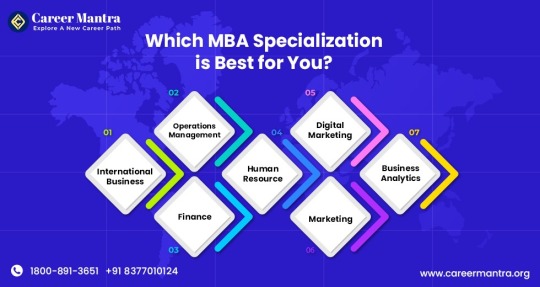
In today’s fast-paced, competitive world, obtaining a Master of Business Administration (MBA) is often seen as a gateway to professional growth and leadership roles. However, choosing the right MBA specialization is crucial in shaping the trajectory of your career. With an array of MBA specializations available, selecting the one that aligns with your interests and professional goals can significantly enhance your career prospects. This blog explores the Top MBA Specializations to help you make an informed decision and ensure long-term success.
Why MBA Specializations Matter
An MBA degree offers you a solid foundation in business management, but the specialization allows you to dive deep into a specific domain, equipping you with the expertise needed to excel in that field. Your choice of MBA specializations can determine the industry you enter, the roles you assume, and the salary you command. Hence, understanding the options available is critical to ensuring your professional success.
Top MBA Specializations to Consider
MBA in Finance Arguably one of the most popular MBA specializations, an MBA in Finance prepares students for leadership roles in banking, investment management, financial planning, and corporate finance. Graduates are equipped with the skills to manage financial resources, analyze market trends, and make data-driven financial decisions. High demand in sectors like investment banking, asset management, and insurance makes this specialization a strong choice for those looking to climb the corporate ladder.
MBA in Marketing If you're passionate about creativity, consumer behavior, and brand management, an MBA in Marketing might be the perfect fit. This specialization focuses on product management, digital marketing strategies, sales management, and consumer insights. Marketing MBAs are highly sought after in industries such as retail, e-commerce, advertising, and media. With the rise of digital marketing, graduates are often positioned to lead marketing campaigns that leverage data analytics, SEO, and social media strategies.
MBA in Human Resource Management (HRM) Businesses rely on human capital to thrive, and MBA specializations in Human Resource Management focus on equipping professionals with the skills to manage and develop this essential resource. Graduates with an MBA in HRM are trained in employee relations, talent management, recruitment strategies, and leadership development. This specialization is ideal for individuals who enjoy working with people and are interested in organizational development and change management.
MBA in Operations Management For those with an interest in logistics, supply chain management, and process optimization, an MBA in Operations Management is a top choice. This specialization emphasizes the efficient management of business operations, including product manufacturing, service delivery, and resource allocation. With the rise of globalization and technological advancements, professionals in this field are in high demand across sectors like manufacturing, e-commerce, and logistics.
MBA in Information Technology (IT) As technology continues to drive business innovations, an MBA specialization in Information Technology prepares students for leadership roles in tech-driven environments. This specialization integrates management principles with technical expertise, covering topics like IT strategy, project management, and systems analysis. Graduates can pursue roles such as IT managers, Chief Information Officers (CIO), and project consultants in industries ranging from software development to IT services.
MBA in International Business In a globalized economy, businesses are increasingly operating across borders, making an MBA in International Business highly relevant. This specialization focuses on global trade practices, international marketing, and cross-cultural management. Graduates are equipped to handle the complexities of managing international teams, navigating foreign markets, and developing global strategies. It's an excellent option for those aspiring to work with multinational corporations or in the export-import sector.
MBA in Entrepreneurship If you're driven by innovation and want to start your own business or lead startups, an MBA in Entrepreneurship could be your gateway to success. This specialization covers topics like venture capital, business plan development, and startup financing. With the growing startup ecosystem worldwide, this MBA specialization enables graduates to turn business ideas into viable ventures or take leadership roles in fast-growing companies.
MBA in Healthcare Management With the healthcare industry expanding rapidly, an MBA in Healthcare Management is becoming an increasingly popular specialization. This program equips students with the skills to manage healthcare facilities, lead healthcare teams, and navigate healthcare policies and regulations. Graduates are sought after for roles in hospitals, pharmaceutical companies, and healthcare consultancy firms.
How to Choose the Right MBA Specialization
Choosing the right MBA specialization depends on your career goals, personal interests, and the industry trends you want to tap into. Ask yourself the following questions:
What are my strengths and areas of interest?
Which industries are growing, and where is there a high demand for skilled professionals?
What are the long-term career prospects of each MBA specialization?
By answering these questions, you can align your MBA specialization with your career aspirations and boost your chances of success.
Conclusion
Selecting the right MBA specialization is a pivotal decision that can shape your future career path. Whether you aim to lead in finance, marketing, operations, or any other industry, a well-chosen MBA specialization will equip you with the knowledge, skills, and network to excel in your professional journey. Explore these top MBA specializations, assess your goals, and take the first step toward a successful career!
#mba specializations#top MBA specializations#MBA in Healthcare Management#MBA in Entrepreneurship#MBA in Information Technology (IT)#education#higher education#universities#colleges#mba
3 notes
·
View notes